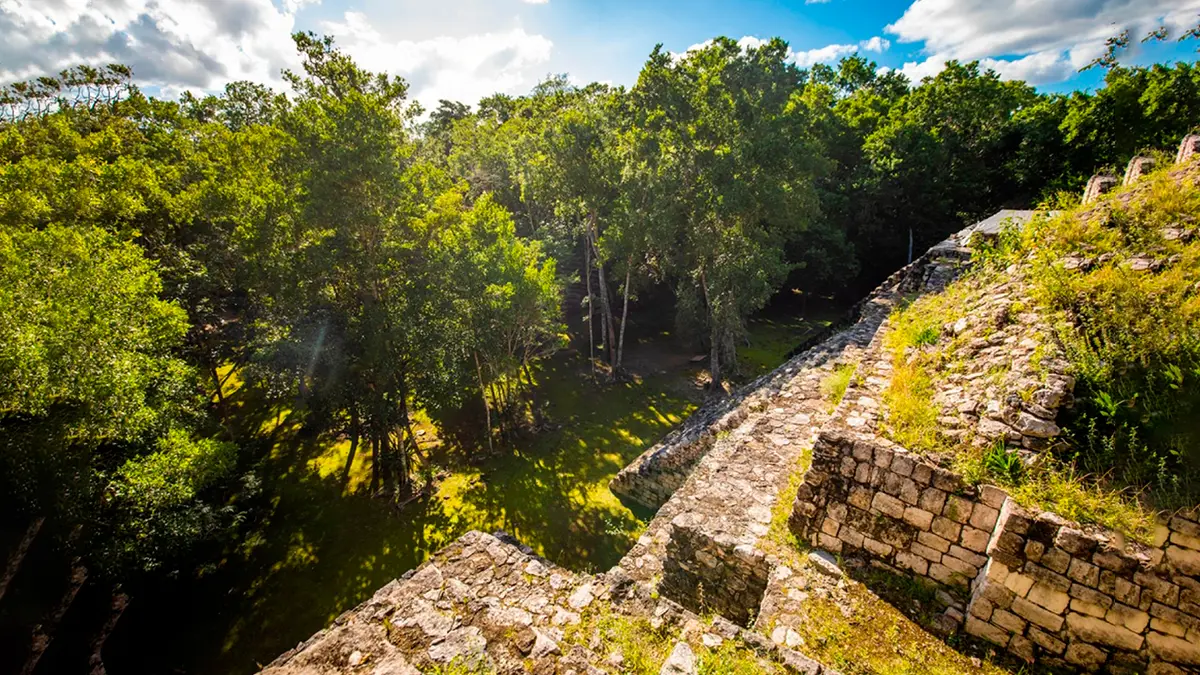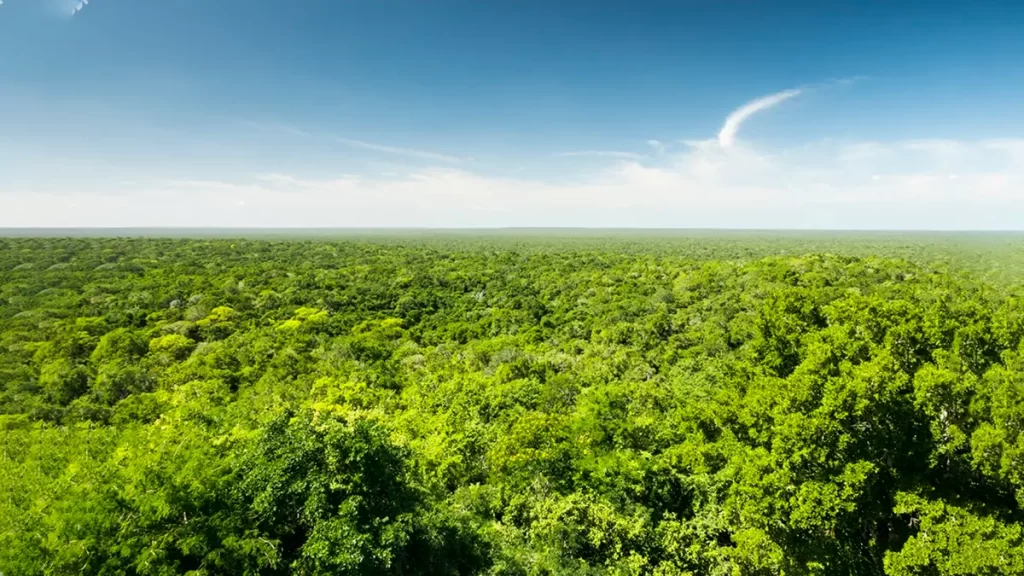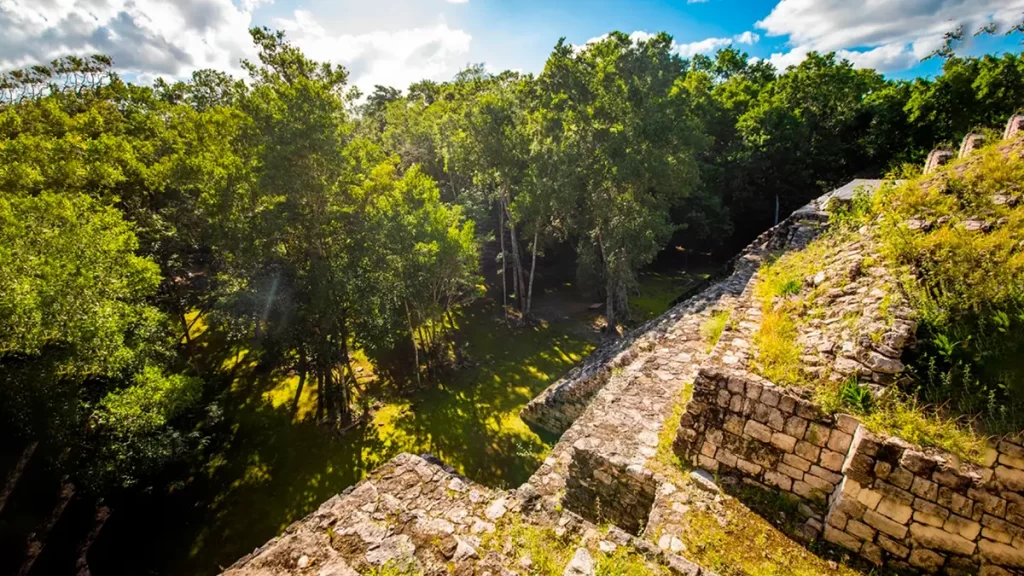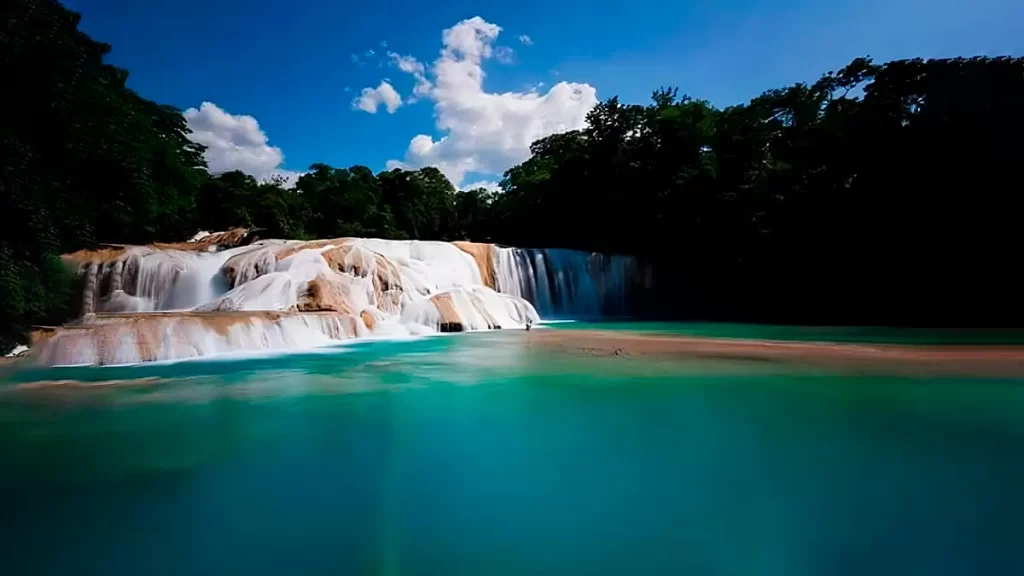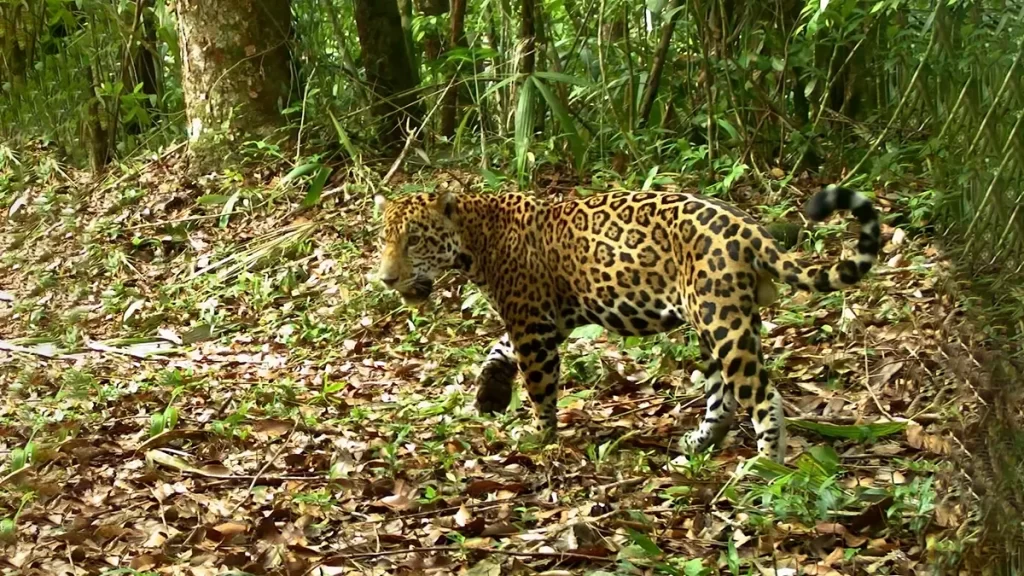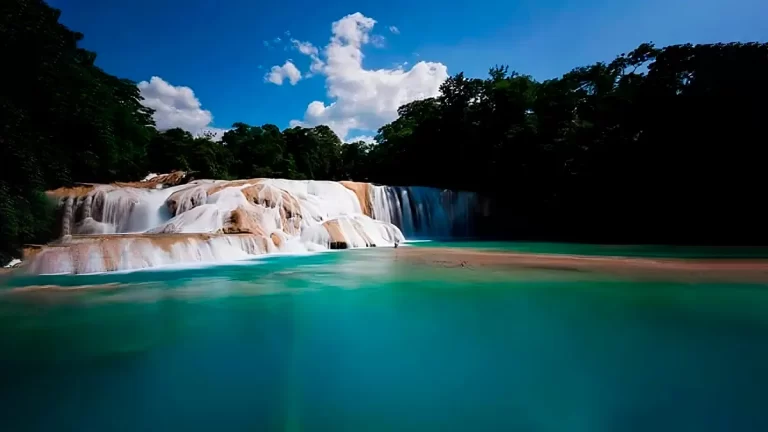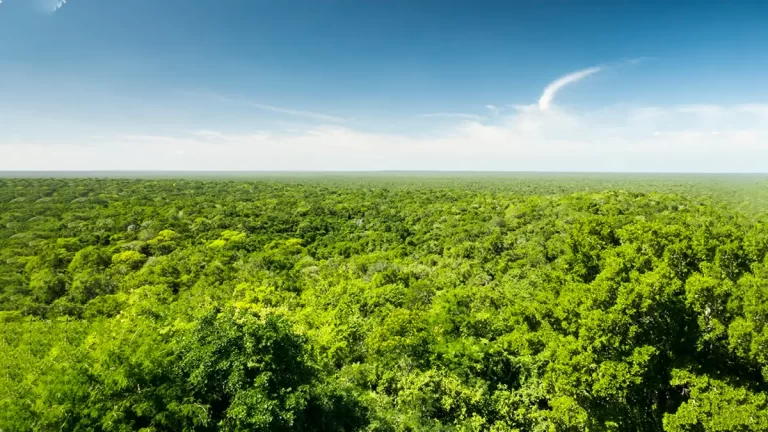Balam Kú Biosphere Reserve
What is Balam Kú and why is it key to the Great Mayan Jungle?
The Balam Kú Biosphere Reserve is a federally protected natural area located in the state of Campeche (municipalities of Escárcega, Calakmul, and Candelaria).
Its strategic value lies in the fact that it connects highly conserved jungle landscapes—including the Calakmul Biosphere Reserve—consolidating ecological continuity for large mammals and bird assemblages in the heart of the Great Mayan Forest.
The reserve covers an area of 463,441.75 hectares and was declared a protected area on August 31, 2023, making it a recent and robust instrument for regional conservation.
The establishment of Balam Kú responds to the objectives of preserving high, medium, and low forests (evergreen, semi-evergreen, and semi-deciduous), tulares, and karst depressions that support key ecological processes—such as watershed recharge and wildlife movement—as well as species listed in NOM-059-SEMARNAT-2010.
The decree strengthens the representativeness of ecosystems on the Yucatán Peninsula, while formalizing a legal framework to regulate land use and sustainable development.
Decree 31/08/2023: surface area, municipalities and conservation objectives
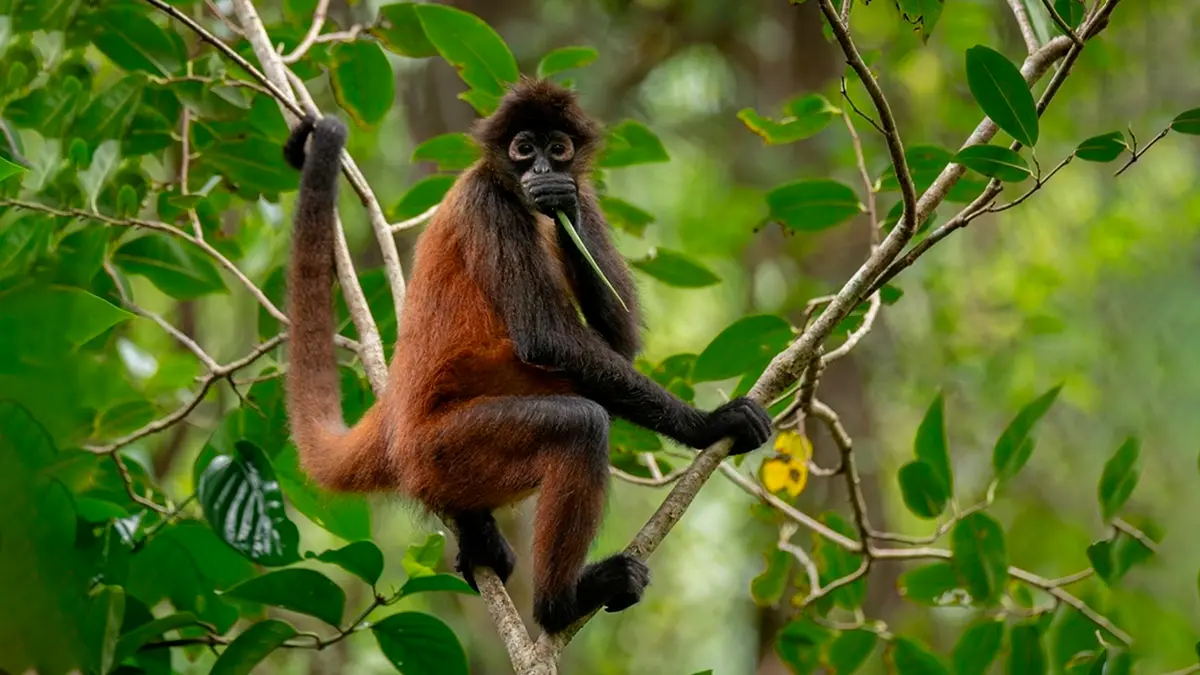
The Decree (DOF, August 31, 2023) declares Balam Kú a Biosphere Reserve and describes its location, legal basis, objectives, and associated biodiversity and cultural elements.
The considerations highlight the State’s obligation to guarantee the right to a healthy environment, the importance of establishing PNA systems, and the contribution to the 2030 Agenda.
For Balam Kú, 1,759 native species (108 endemic) and multiple species in the risk category are documented. Outstanding ecological phenomena are recognized, such as the “Bat Volcano”—with an estimated colony of ~3 million insectivorous individuals—and a king vulture roost of national importance.
These references guide conservation goals, land-use change prevention, and fire management.
The decree also refers to social participation (guaranteed hearing) and coordination between SEMARNAT-CONANP and the Campeche State Government for the administration of the area, which is essential for implementing surveillance, restoration, and community capacity-building actions.
Official zoning: cores (Chakpol ch’oom and U pixan le k’aaxo) and buffer zone
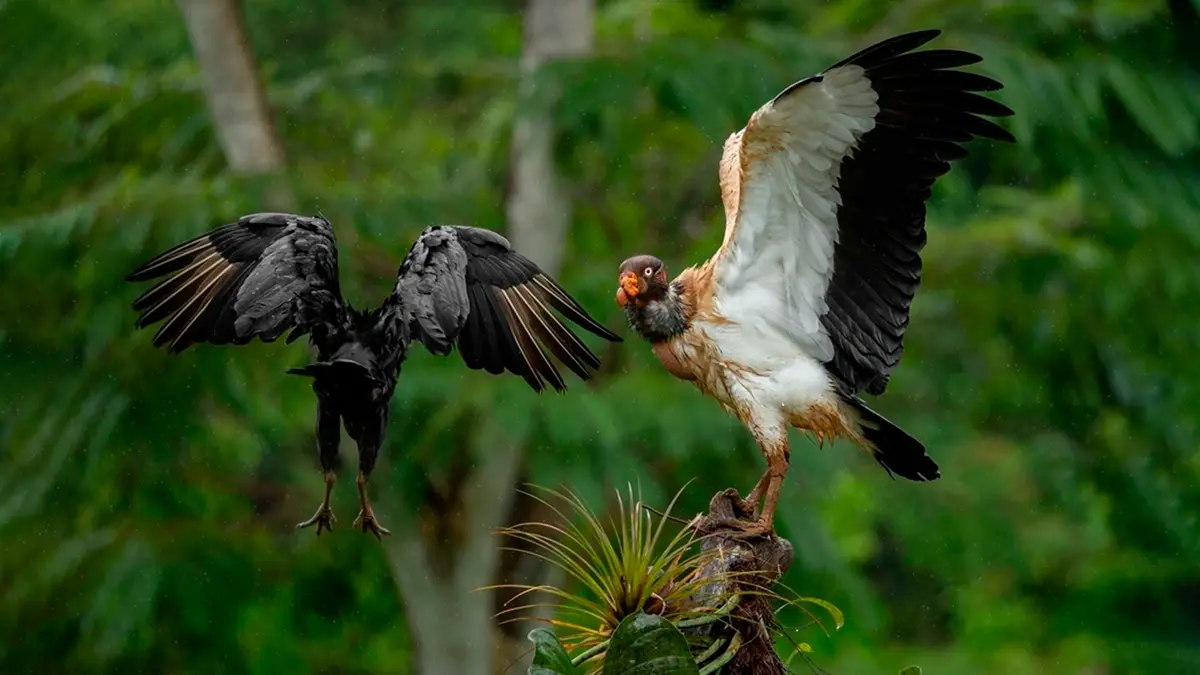
The Balam Kú zoning includes two core zones—Chakpol ch’oom and U pixan le k’aaxo—and a buffer zone.
The core zones concentrate features of high ecological value and sensitivity; activities that could alter habitat or population viability are restricted within them (e.g., the dumping of pollutants such as glyphosate, resource extraction, among other prohibitions established in the LGEEPA and applicable regulations).
In the buffer zone, compatible low-impact activities are permitted, subject to criteria and authorizations, prioritizing research, monitoring, and responsible nature tourism.
This spatial planning is key to guiding visitor routes, scientific research, and adaptive management; at the regional level, it helps sustain biological corridors with Calakmul and the Mexico-Guatemala border, strengthening the connectivity of the Great Mayan Forest.
Ecosystems and focal species
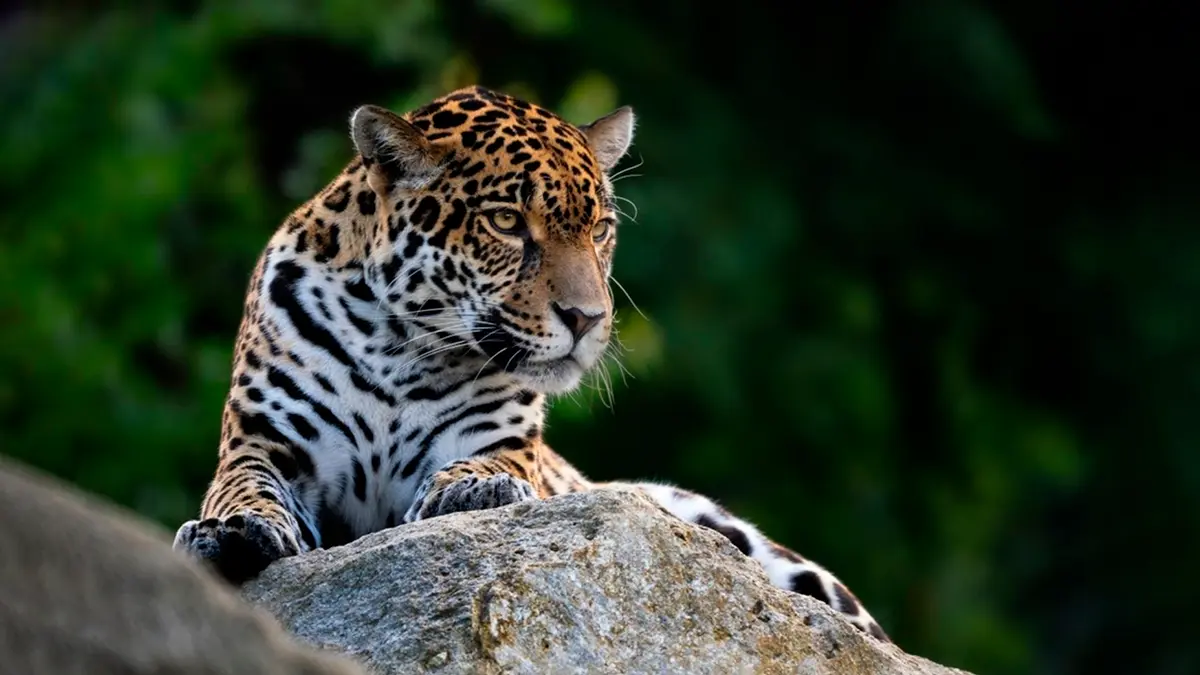
Balam Kú’s ecosystems include tropical rainforests with varying degrees of decay, tular forests, and karst systems with waterholes, which function as critical drinking places during the dry season.
In terms of fauna, the decree and the technical sheet highlight the presence of jaguars (Panthera onca), tapirs, white-lipped peccaries, spider monkeys, and howler monkeys, as well as birds such as the ocellated turkey and the king vulture. Regarding flora, timber species and plants are listed in protected categories.
This combination, along with the scale of the territory, explains Balam Kú’s role as a refuge for viable populations and as a buffer against anthropogenic pressures.
The threats identified in the decree—deforestation, illegal logging of fine woods, fires caused by agricultural and livestock burning, invasive species, and droughts affecting waterholes—guide management priorities (prevention, restoration, invasive species control, and community surveillance).
Connectivity with the Calakmul Biosphere Reserve and the regional corridor
Balam Kú shares boundaries and ecological mosaics with the Calakmul Biosphere Reserve and is integrated into the transboundary corridor of the Great Mayan Forest.
This functional connectivity supports the movement of large mammals, seed dispersal, and gene flow, in addition to buffering local impacts.
Official information from CONANP (SIMEC and Descubre ANP) and the Decree itself underscore this ecological and management interdependence, which is essential for the long-term viability of species and ecosystem services.
From a public use perspective, connectivity allows for the design of interpretive circuits that integrate nature and culture—Calakmul and Balamkú (archaeological zone)—always adhering to zoning restrictions.
How to get there and when to visit
Regional access is via Federal Highway 186 (Escárcega–Chetumal) and secondary roads to common lands and checkpoints.
Mobile coverage may be limited; it is recommended to plan fuel, water, and cash.
For visits, the Discover ANP platform and official CONANP channels offer guidance on routes, services, and safety recommendations.
The dry season favors observation in waterholes; during the rainy season, the vigor of the vegetation and the water dynamics define a different experience.
As a general rule, nature tourism should be limited to small groups, times of less thermal stress (dawn/afternoon), and observation distances that avoid disturbances, especially around bird roosts and cave entrances (bats).
Guidelines and good practices (visit and research)
Based on the decree, operations that compromise habitat and ecological processes (discharge of pollutants, including glyphosate, extraction of flora/fauna, modification of riverbeds, among others) are prohibited in core zones.
All permitted activities must be low-impact, comply with permits/authorizations, and maintain the integrity of the site.
In buffer zones, compatible activities (research, monitoring, environmental education, and responsible tourism) must follow minimum-impact protocols, zero-trace waste management, safety, and respect carrying capacity.
For research and filming, it is recommended to consult with the ANP Directorate (SIMEC provides the Acting Director and identification data for the area) and process the corresponding permits with CONANP.
Living culture: link with the Balamkú archaeological zone
The Balamkú archaeological site—known for its Classic period polychrome stucco frieze—is located within the Balamkú Biosphere Reserve.
Access begins at a detour in front of the Conhuás common land, approximately 3 km along a secondary road; it is managed by the INAH (National Institute of Archaeology and History).
Integrating the cultural visit with environmental interpretation promotes a comprehensive understanding of the biocultural landscape—a fundamental feature of the Mayan territory.
All visits must follow established routes, signage, and heritage conservation regulations.
Frequently Asked Questions
Balam Kú Biosphere Reserve
Balam Kú is a pillar of connectivity in the Great Mayan Forest.
Its recent decree, the zoning of high-priority areas, and the presence of phenomena and species of national importance reinforce the need for informed visits and collaborative management with communities and public stakeholders.
Promoting good practices for public use and research will sustain the ecological functionality and biocultural heritage that distinguish this territory.
Table of ecosystems
Gran Selva Maya
Balam Kú Biosphere Reserve — Official material for download
Ecosystems & Focal Species Table + Visitor Best Practices
Responsible public use • PDF documentCartographic & regulatory source
Creation Decree of the Balam Kú Biosphere Reserve (DOF, 31/08/2023) and official SIMEC/CONANP factsheet (update 24/04/2025). For maps, use the Decree’s official PDF or CONANP GIS shapes.
For web publishing, embed the official map showing **core zones** (Chakpol ch’oom and U pixan le k’aaxo) and the **buffer zone**. Keep legend and scale.
Summary table — Ecosystem ↔ Focal species ↔ Management scope ↔ Best practices
| Ecosystem (SIMEC) | Focal species (examples) | Recommended management scope | Key best practices |
|---|---|---|---|
| Tall Subevergreen Forest | Jaguar (Panthera onca), Spider monkey (Ateles geoffroyi) | Core: research/monitoring. Buffer: low-impact viewing on trails and edges. | Groups ≤10; quiet operation; keep >50 m from mammals; no playback; do not track animals. |
| Medium Subevergreen Forest | Baird’s tapir (Tapirella bairdii), White-lipped peccary (Tayassu pecari) | Core: no tourism; Buffer: guided routes only. | Wildlife crossings: speed <40 km/h; dawn/dusk activity; no direct lighting on fauna. |
| Spiny Low Subevergreen Forest | Ocelot (Leopardus pardalis), Margay (Leopardus wiedii) | Core: science; Buffer: interpretive hiking. | Stay on paths; avoid burrows; do not publish sensitive coordinates. |
| Low Deciduous Forest | Ocellated turkey (Meleagris ocellata), Yucatán amazon (Amazona xantholora) | Core: monitoring; Buffer: viewing at a distance. | No playback; keep >100 m from roosts; use binoculars. |
| Tall Subdeciduous Forest | Orange-breasted falcon (Falco deiroleucus), Pale-billed woodpecker (Campephilus guatemalensis) | Core: science; Buffer: designated birding points. | Do not approach nests; avoid tripods on narrow trails; stay ≤15 min per point. |
| Medium Subdeciduous Forest | Howler monkey (Alouatta villosa), Kinkajou (Potos flavus) | Core: monitoring; Buffer: guided walks. | Keep 30–50 m from primates; no feeding; no flash. |
| Low Subdeciduous Forest | Black iguana (Ctenosaura similis), Yucatán iguana (Cachryx defensor) | Core: conservation; Buffer: spot viewing. | Do not handle reptiles; long sleeves/hat; avoid thermal stress to animals. |
| Tular (Marsh Vegetation) | Morelet’s crocodile (Crocodylus moreletii), Muscovy duck (Cairina moschata) | Core: preservation; Buffer: viewing from edges/platforms. | At least 15 m from crocodiles; no drones; no water entry. |
| Seasonal Hydrology (aguadas, lagoons) | Amphibian & waterbird assemblages; catfish Rhamdia guatemalensis | Core: no public use; Buffer: designated lookouts. | No soaps/repellents in water; avoid soft shores; keep stays short. |
Wildlife presence is seasonal and site-specific. Adjust routes with local guides and the ANP management office. This table does not replace permits nor the Management Program.
Visitor Best Practices — Gran Selva Maya
Before your visit
- Check official road status, weather, and notices.
- Book accredited local guides and community services.
- Plan for water, food, first-aid kit, headlamp, cash, and fuel.
During the visit
- Stay on designated trails and lookouts.
- Keep small groups (≤10) and quiet; no speakers.
- Maintain distances: >50 m from mammals and >100 m at roosts/colonies.
- No drones in core; in buffer, only with permit.
- Zero waste: pack-in/pack-out; avoid single-use plastics.
Wildlife watching
- No playback or lures; no flash pointed at wildlife.
- No feeding; no handling of flora/fauna.
- Respect dwell times at sensitive spots (≤15 min).
Water & fire
- No soaps or chemicals in aguadas/lagoons.
- Fire is prohibited in core zones; follow protocols in buffer.
Safety & communication
- Avoid night driving; share your itinerary; mobile coverage is limited.
- Wear long sleeves, hat, and repellent; stay hydrated.
Research / filming
- Obtain permits from the ANP Directorate (CONANP).
- Apply biosafety protocols and collection regulations.
Credits & contact
Sources: DOF Decree (31/08/2023); SIMEC Balam Kú factsheet (24/04/2025). This material is for informational purposes and must be used in accordance with the current Management Program.
Contact: Protected Area Directorate — CONANP • Gran Selva Maya Portal
